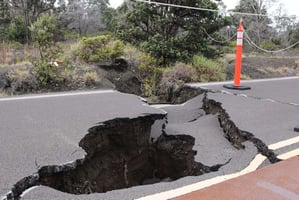The South Island of New Zealand is located on the boundary of two tectonic plates, the Pacific...
How educating the general public in disaster preparedness and response can save lives
Educating the general public in disaster preparedness and response plays a crucial role in saving lives during emergencies. By providing individuals with the necessary knowledge and skills to effectively respond to disasters, communities can better mitigate risks, reduce vulnerabilities, and enhance overall resilience. This comprehensive approach to disaster management involves raising awareness, promoting proactive measures, and empowering individuals to take appropriate actions before, during, and after a disaster occurs.
One of the primary benefits of educating the general public in disaster preparedness is the ability to prevent or minimize loss of life. When individuals are equipped with knowledge about potential hazards in their area and understand how to respond appropriately, they are more likely to make informed decisions that can save lives. For example, knowing how to evacuate safely during a hurricane or earthquake can significantly reduce the risk of injury or death.
Furthermore, educating the public in disaster preparedness helps foster a sense of community resilience. When communities actively engage in preparedness efforts, they become more self-reliant and better equipped to handle emergencies. This includes having emergency supply kits, developing family emergency plans, and participating in community drills or exercises. By working together and sharing resources, communities can effectively respond to disasters and support one another during times of crisis.
Another important aspect of public education in disaster preparedness is the promotion of early warning systems. By disseminating information about impending disasters through various communication channels such as television, radio, social media, and mobile applications, individuals can receive timely alerts and take necessary precautions. Early warnings enable people to evacuate or seek shelter in advance, reducing the likelihood of being caught off guard by sudden events like flash floods or wildfires.
Moreover, educating the general public in disaster preparedness helps alleviate the burden on emergency response systems. When individuals are aware of how to respond appropriately during a disaster, they are less likely to panic or engage in risky behaviors that may hinder rescue operations. This allows emergency responders to focus their efforts on those who require immediate assistance, thereby increasing the overall effectiveness of the response.
Additionally, public education in disaster preparedness can contribute to long-term community development and sustainability. By integrating disaster risk reduction into educational curricula, individuals of all ages can develop a deeper understanding of hazards, vulnerabilities, and resilience strategies. This knowledge can be applied not only during emergencies but also in everyday life, promoting a culture of safety and preparedness.
While it is difficult to quantify the exact probability of saving lives through public education in disaster preparedness, numerous studies and real-life examples demonstrate its effectiveness. For instance, research conducted after major disasters such as hurricanes, earthquakes, and wildfires consistently highlights the positive impact of public education campaigns on reducing casualties and improving response outcomes.
In conclusion, educating the general public in disaster preparedness and response is vital for saving lives during emergencies. By raising awareness, promoting proactive measures, and empowering individuals with knowledge and skills, communities can enhance their resilience and effectively respond to disasters. Public education plays a crucial role in preventing loss of life, fostering community resilience, enabling early warnings, relieving pressure on emergency response systems, and promoting long-term sustainability.




